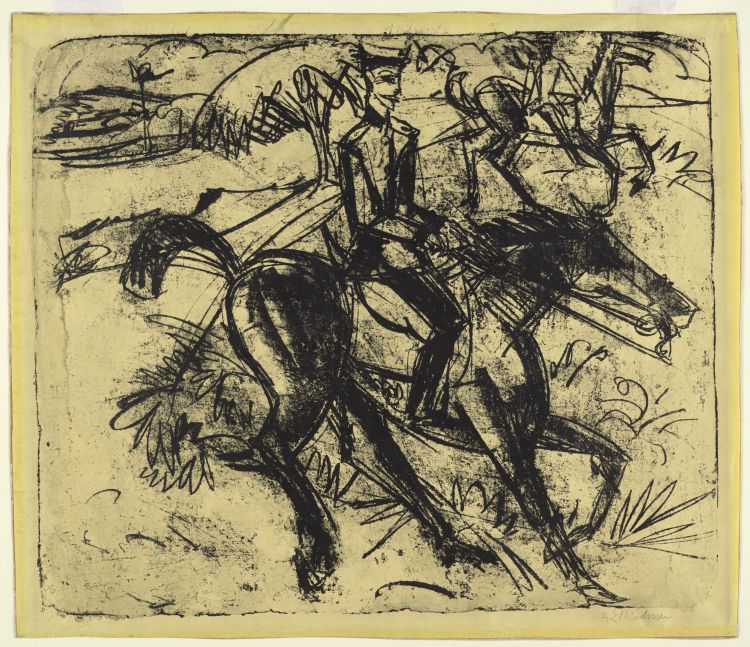Saturday, February 2, 2013
Masterworks of German Expressionism: Max Beckmann, Käthe Kollwitz, Ernst Ludwig Kirchner, and Max Pechstein
The Museum of Modern Art presented four major acquisitions as part of the exhibition Masterworks of German Expressionism. The new acquisitions, by the artists Max Pechstein, Ernst Ludwig Kirchner, Käthe Kollwitz, and Max Beckmann, are shown alongside 13 important works from MoMA’s renowned collection of German Expressionist prints. These dramatic woodcuts and lithographs, including many in strong, vibrant color, often center on the contrast between urban life and nature, with subjects ranging from the cabaret to nudes in the landscape. Spanning the first quarter of the twentieth century, the works also represent various phases of the Expressionist movement, from the youthful exuberance of the early years to the disillusionment and anxiety of the postwar period. Each of the works in the exhibition is by an influential artist of the Expressionist movement. In addition to the four acquisitions, artists represented include Erich Heckel, Emil Nolde, and Karl Schmidt-Rottluff.
The German Expressionist movement began in 1905 with the foundation of the artists group Brücke. The Brücke artists heightened the emotional impact of their work through sharp distortions of color and form, and hoped their art would be a force for social and cultural renewal. Printmaking played an integral role in the movement and was used to circulate the artists’ ideas to the largest possible audience. The Expressionists sought a direct engagement with their materials and exploited the inherent properties of each technique to achieve maximum expressive power.
Max Pechstein (1881–1955) was a dedicated printmaker and a member of the Brücke group. His lithograph,
Dancers (Pair of Dancers) (1909) exemplifies the Brücke artists’ fascination with dance as an immediate and unreserved form of expression. The black lines and loose red brushwork on yellow paper simulate the lurid atmosphere of a nightclub.
Ernst Ludwig Kirchner (1880–1938), the leader of the Brücke group, helped to revitalize the woodcut and lithography through his unorthodox approach to materials and techniques. His
Evening Patrol (1915) is a lithograph completed during a leave of absence from military service following a nervous breakdown. Its rapidly drawn lines and jagged composition convey a sense of anxious energy.
Käthe Kollwitz (1867–1945) captured the somber mood of the postwar period in stark black-and-white prints. The woodcut
Commemorative Print for Karl Liebknecht (Gedenkblatt für Karl Liebknecht) (1919–20), created during a time of political and economic instability and in response to the murder of the Communist Party leader, evokes traditional images of the lamentation of Christ.
Max Beckmann (1884-1950), the leading artist of postwar Germany, dealt with the disillusionment and depravity that overwhelmed German society after the war. The woodcut
At the Toilette (1923), depicts two women with slumped shoulders and averted eyes in an allegory of alienation and fatigue in 1920s Berlin.



